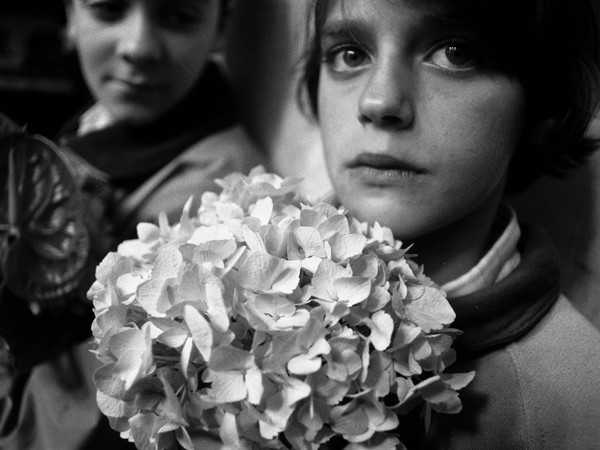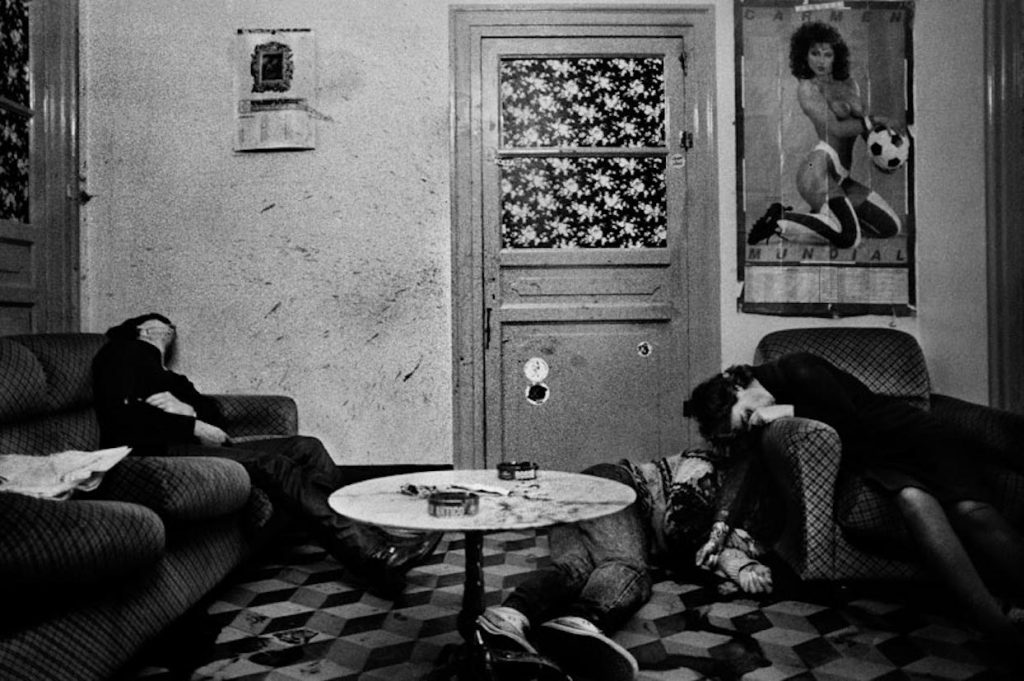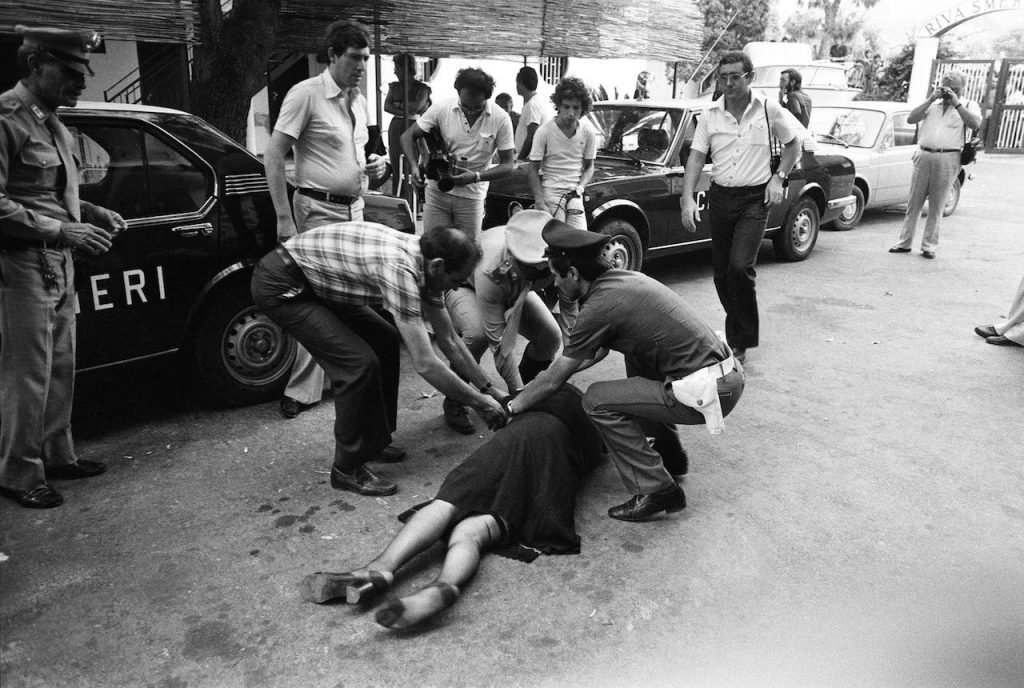by Chiara Ruberti and Enrico Stefanelli
_
Until March 15th, Granai di Villa Mimbelli (Livorno) will host a retrospective dedicated to one of the most influential female figures in Italian photography, Letizia Battaglia. We interviewed the curator of the exhibition, Serafino Fasulo and we even managed to obtain a brief, precious exchange with Letizia Battaglia.
CR: How did the “Photography and World of Work” project, that the Carlo Laviosa Foundation is carrying out in collaboration with the Municipality of Livorno, come about ?
SF: We presented the project last June with a competition, open to professional and amateur photographers, where we asked to decline the macro theme “Photography and the World of Work” focusing on “The work in the nautical world: nautical construction sites, yacht clubs and related activities “. For the first edition of our yearly competition, the theme was the sea, which has always been the link between our city and the rest of the world: the trade and encounters of cultures that the sea has brought by are the pillars of the city.
In 2019 the competition will have as its theme the interaction between manufacturing and landscape: what interests us are not the environmental disasters or the classic industrial landscapes, already widely documented by photography, but the transformations that the presence of industry brings to the cities, to the development and urban planning (think, for example, of entire neighbourhoods built around industry and at its service) as well as the changes in uses and habits of people. In addition to the competition, the program of our Foundation includes two important annual events: the development of an educational project and the presentation, through an exhibition, of the work of an author of international relevance. With regards to education, in 2018 we have involved 7 local associations working in the social field and we have chosen Ivo Saglietti to coordinate the project,this for his ethics and for the attention to certain issues he has always had. Under the supervision of Ivo and thanks to his “revisions” twice a month, we gathered a corpus of images, which, if it cannot be considered exhaustive, is certainly representative of what happens in the city from a social point of view. The author with whom we decided to inaugurate our exhibition activity was Letizia Battaglia.
CR: Why Letizia Battaglia?
SF: Letizia Battaglia is, first of all, a “worker” of photography: she began her career as a reporter, and in Italy she was perhaps the first woman to approach a role that until then was the exclusive prerogative of men. For 19 years she moonlighted, as she said, for an important Sicilian newspaper (L’Ora) and her work tells, first of all, the emancipation women, in a time when it was difficult for women to liberate themselves first from their fathers and then from their husbands.
CR: Battaglia’s photographic production is enormous, what thread have you chosen to follow in the construction of the selection and the exhibition itinerary?
SF: Everything starts from a reflection: Letizia Battaglia is the photographer of the mafia and its victims or is she also something else? What I wanted to emerge from the exhibition is Letizia’s path and not to focus exclusively on the mafia images, even if those are an essential part of her work and the one best known to the public. Letizia Battaglia has photographed above all her city, Palermo: she photographed the Palermo “that stinks”, a wounded and poor city, in which, however, she managed to catch a glimpse of hope for the future.

In the photograph of Letizia Battaglia there is a thought. Behind her gaze there is an education made of art, of sixteenth century painting, of cinema, literature, travel. There is the construction and the awareness of a thought, without which, even with a great talent, it would be impossible to take “important” photographs. By her own admission, Letizia does not have the best technical knowledge, but her eye has learned immediately, perhaps also from the need to move around many other photographers, to read the reality very quickly and frame it in images that are not only denotative, but also connotative, which condense the representation of reality, its interpretation and leave to those who look at it the space for further personal reading.
CR: Today we often talk about “female gaze”, how much is the feminine, if any, in the work of Battaglia?
SF: Women are the real protagonists of the exhibition. Women, both in absence and in presence, are in every photograph of Letizia. Little girls, wives, mothers, sisters. Their gaze, the right expectations on what society should offer them, their pain. In the chiaroscuro of Letizia’s images, in the shaded areas and in the blinding lights, there is the ancient pain of women and of the Sicilian land. Letizia has photographed little girls who, in poverty, look at the future. Mothers mourning dead children and mothers who faint, believing their children are dead. Killed prostitutes dressed in black, like widows of themselves. No stereotype, but a deep and compassionate look that restores dignity to women.

CR: If you had to choose an image of this exhibition as a symbol of this exhibition which one would it be?
SF: Andreotti together with the debt collectors of the Salvo family. It is a blurred photograph, very grainy, unbalanced. But it is a photograph that has been acquired in the proceedings of the State-Mafia negotiation trial. It is not just a photograph, it is a testimony, an active one, an important piece of the history of our country.
//
ES: Letizia, you’ve built a lot. In the world of photography you are a point of reference. What of your life did you have to sacrifice ? What did you miss or are you missing?
LB: I did not sacrifice anything. I only received, because photography was my life. I was a woman lost in emptiness, thanks to photography I became a queen.
ES: A gift that is recognized to you is that of courage.
LB: That it’s not true.
ES: So what quality would you say defines you?
LB: The project. I always did what I was doing at best. I had to do it. With courage and fear. It was all there, I was throwing up with fear, imagine. But it was the project, I had to do it. It was so important for me to do something seriously. That was what I had to do, I had to do it well and tell it well. I felt within me what others lived, what I was documenting. Courage, I never felt courage. If there was some, then good. I knew that every time I went, I took some risks. I got spat in the face, go figure. They wrecked my car, I received anonymous threat calls.

ES: What about the International Center? What does it represent for you?
LB: It is the same project, an all time project. Doing things for Palermo and do them well, so that they’re beautiful. Looking for beauty, looking for order in disorder. If you notice, the Center is very well done, we like to keep it in a certain way, we welcome people and guests well. I’m also involving non-famous photographers, to make them grow. So, the great names and the new ones are side by side. For example, soon we will show Roberto Strano’s photographs of accidents. I would like to recover a certain kind of work, starting with Mulas, of which I remember the photos of pop artists. We must recover the past as well. I’d also like to work on Pinna. So many things get lost, maybe just because we do not have the right contacts to reach them.
We could also exchange ideas, contacts and exhibitions, Photolux with the Center … it would be nice.
The exhibition:
LETIZIA BATTAGLIA FOTOGRAFIE
curated by Serafino Fasulo
Granaries of Villa Mimbelli – Museo Civico Giovanni Fattori
via San Jacopo in Acquaviva 65, Livorno
January 19th – March 15th 2019
from Friday to Sunday, 10 – 13 am and 16 – 19 pm
ticket: € 5
free for children under 14 years
guided tours on reservation
February 18, 2019




